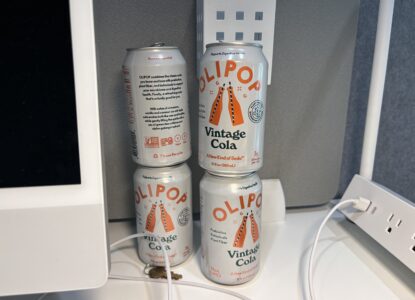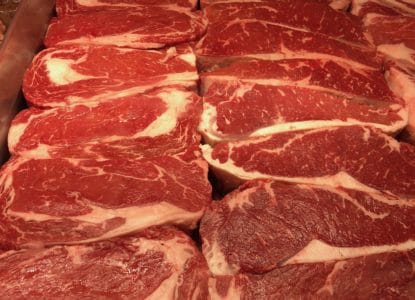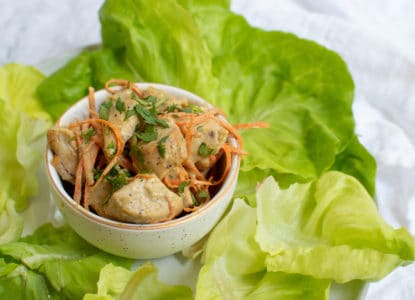How To Get Enough Iron On A Plant Based Diet

Contents
I’ve got a lot of vegan patients and almost all of them ask me if they should be concerned about getting enough iron.
It is possible, but it takes effort and planning, and the risks of deficiency increase when the diet is not nutrient dense. , So if you are already a Vegan for health reasons, or you just took a Gene Food test and were assigned to one of our more plant forward diet types like Okinawan or Villager, this post is for you.
Why iron is important
We use iron to make hemoglobin, the protein in red blood cells that carries oxygen throughout the body, including to the lungs and muscles. An inability to make enough hemoglobin due to an iron deficiency leads to a condition called anemia.
Symptoms of iron deficiency
According to the University of Michigan, common symptoms of anemia include:
- Fatigue
- Shortness of breath
- Dizziness
- Headache
- Feeling cold and cold hands and feet
If you’re concerned about iron deficiency, discuss these lab tests with your doctor.
Are vegan diets deficient in iron?
While it’s often assumed that vegans are more likely to be anemic due to a lack of dietary iron, the evidence is mixed.
Some studies suggest that levels of anemia are around the same, while others have found a higher incidence of anemia or low iron status in omnivores compared to vegans and/or vegetarians, and vice versa. Having said that, the risk of iron deficiency especially on vegan diets is very real. This 2018 meta-analysis concluded:
Vegetarians have a high prevalence of depleted iron stores. A higher proportion of vegetarians, compared to nonvegetarians, had iron deficiency anemia. This is especially true for premenopausal vegetarian women.
We should note here that several individual dietary components influence iron absorption and not every vegan or omnivore eats the same foods day in day out or has the same genetics influencing nutritional status.
Non-heme iron vs. heme iron
Plant-derived foods mostly contain a type of iron called non-heme iron, while meat mostly contains heme iron. These two types of iron are absorbed very differently, with heme iron easily absorbed and then broken apart to remove the protein component (the heme) so the body can use the iron as needed. Non-heme iron requires some help to be absorbed, and, conveniently, the very things that support absorption (vitamin C and organic acids) are usually present in a balanced vegan diet.
Iron from meat is more easily absorbed
Iron is rare in that the human body regulates iron status by modulating iron absorption instead of altering how much iron is excreted, i.e. a person who has less iron in their diet will absorb more non-heme iron than a person with a high iron intake. It’s important to note, however, that the heme iron in meat is more easily absorbed and not subject to the same degree of regulation. As such, a person who eats a lot of meat (particularly red and processed meat) may accumulate an excess of iron, which is associated with potentially harmful effects on health (iron is a pro-oxidant), including a possible 20-30% increase in the risk of endometrial cancer and an increased risk of type 2 diabetes and its progression.
But the fact remains that while you don’t necessarily want to load up on an excess of heme iron, you do need some iron in your diet to stay healthy.
Hemochromatosis
For individuals with the genetic condition hereditary hemochromatosis, keeping iron intake low is especially important. Avoiding eating red meats and instead eating a plant-based diet may be helpful in this regard. Avoiding iron supplements and vitamin C supplements is also important, while eating foods that inhibit iron absorption can also help (more on this in a moment).
Plant based diets can be iron deficient, but don’t have to be
Plant-based diets are not without problems, of course, when it comes to iron status. Additionally, I often remind my patients that any diet can be an unhealthy one if the individual on the diet is not doing it right. After all, there are hundreds of ultra processed and high sugar foods on the market that are in fact vegan.
A diet rich in legumes and grains, for example, is more likely to be high in phytic acid (phytates), which inhibit iron and mineral absorption.
The importance of soaking and sprouting
Soaking legumes before cooking, and cooking grains, helps to eliminate much of the phytic acid, however, making this a non-issue for most vegans. Fermentation and germination (sprouting) can also activate phytases in cereal grains and legumes that then degrade the phytic acid and improve iron absorption.
Polyphenols in plant-derived foods also present problems for iron absorption. These polyphenols include oxalic acid, phenolic acids, tannins, and flavonoids. These substances are common in tea, coffee, chocolate, and wine, as well as berries, with oxalic acids found in spinach and rhubarb (which is why kale is a better source of iron than spinach!).
Phosphates (found mainly in soda and mineral water) can also inhibit iron absorption, as can calcium and other minerals because they all use the same transport system in the gut.
In general, however, eating a variety of foods at each meal and including foods rich in vitamin C will counteract any inhibition of iron absorption.
All in all, the human body is usually perfectly capable of absorbing and using iron from plant sources, but it can take a few months of eating an exclusively plant-based diet for the body to adapt and upregulate absorption. This is why I am always keen to point out to new vegans that it makes a lot of sense to pay close attention to iron in the first six to nine months of veganism.
Vitamin C can help with iron absorption
Arguably, the best way to enhance iron absorption in a vegan diet is to take a vitamin C supplement (around 250-500 mg) with food, or to include plenty of fresh fruits and vegetables at every meal. Vitamin C also appears to play a role in how the body uses iron at a cellular level. In addition to supplements, many vitamin C powders which can be mixed into drink exist on the market. Just be sure to get options without any added sugar.
Can cast iron skillets help with iron levels?
Research that has been done in developing countries, where anemia is an even greater challenge than in the West, has confirmed that using cast iron cookware can help to increase iron levels. So, if you are on a plant based diet and are showing symptoms of iron deficiency, using a high quality cast iron skillet like Lodge could prove to be a useful strategy.
Final thoughts
Some of the risk of becoming iron deficient is genetic.
We report on iron in the micronutrient panel in the Gene Food custom nutrition plan.
Vitamin C helps with the absorption of iron, as does cooking with a good quality cast iron skillet.
If you’re concerned, or want to keep a close eye on your iron levels, work with your physician to monitor your blood work.



